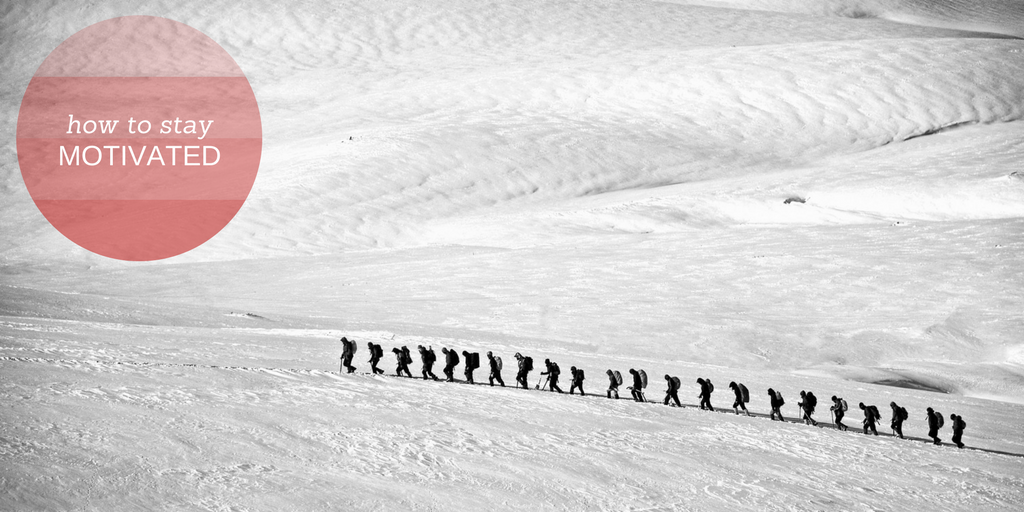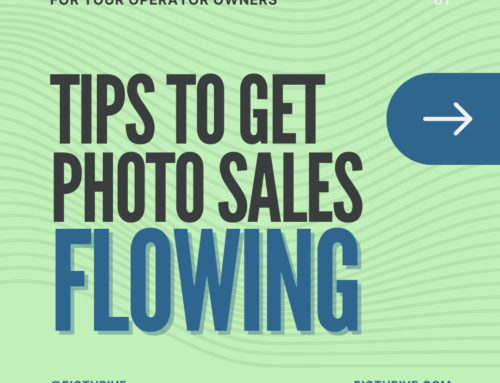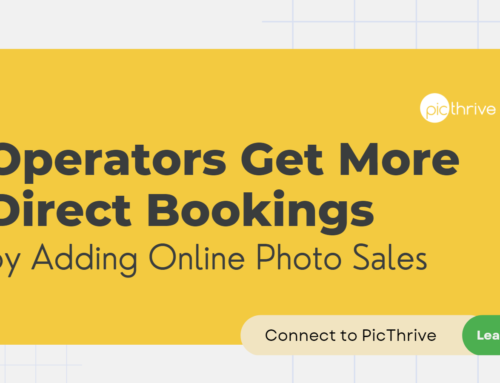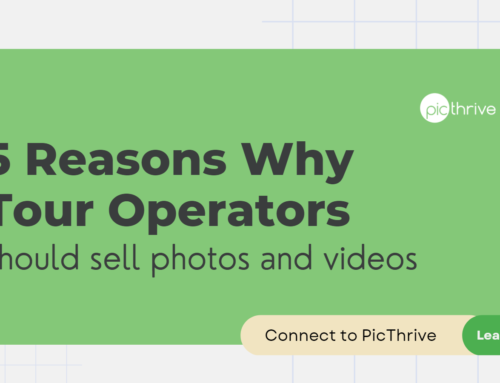Keeping Photographers Motivated: How to create a staff photographer that is an overall Company Asset
Being a motivated tour and activity photographer and staying to the task of creating a set of standardized images that sell for an outfitter can sometimes be conflicting.

From the owners/managers perspective:
Why train new staff each season when I could have someone else do it for me (i.e. a third party photography company)? This is a constant dilemma from an owner’s perspective, and depending on the size of your outfit and number of people managing the staff, this can be extremely time consuming.
The delegation of tasks is as much an emergency safety/crisis management skill as a day-to-day business one. This is a reality in my day-to-day as a photographer and a Guide. Every small, medium or large-scale business owner is at least aware of how to efficiently use their staff. However, how they actively engage the staff is not something they want to think about during the busiest times of year/season. That wheel should be greased and rolling on its own once those times are in full swing.
Each great entrepreneur or owner/manager understands how each facet of their business runs. Perhaps they do not know each and every minute detail of their day to day business (and how that therein gets carried out). BUT, the leadership skills in relying on others to carry out these tasks is essential and it is found through empathy. An efficient leader must understand a certain task, to a degree, in order delegate it out to one who can handle the function appropriately.
Photographers and those handling the photo sales are in direct contact with clients. As a photographer and an owner, we have to be aware of the positive and negative responses of people to specific images and/or experiences. It is essential to a company to remove the images from their photo albums that do not sell. The photography staff and point of sale team KNOW what is selling. Allowing the photo staff to appreciate what sells and still facilitate creative drive is beneficial to the company, holistically. A great photo can generate new marketing streams, draw in new clientele, or spur further enthusiasm from the staff.
Tour operators have the ultimate dilemma with their guide and photography staff: Guide/Photographer retention between seasons:
From a Guide and Photographer perspective:
Anyone coming into the new position of a staff photographer has a multitude of motivations leading them: gaining photography experience, geographic location, tour activities, access to other activities, eliminating the monotony of an office JOB! For those coming into the work, it may be short term, but it could lead to other avenues and work progression in a more network oriented global environment.
Ultimately, this comes down to a simple ‘quality of life’ question: are they willing to sacrifice some time, finances, individual freedoms to achieve vocational satisfaction.
Incentives are the key driver in the decision here: free trips (when available), fun activity (shooting a camera), outdoor office (healthy parameters for living), possible use of gear (and maintenance therein). Essentially, this means FREEDOM TO EXPLORE… and exploration is a key driver to creativity.
A job that is fun, exotic, and explorative has to remain that way to those who are drawn into it. Allowing the company resources to maintain staff enthusiasm is a vital part of the group dynamic in a business that has a shorter, busier season. Boredom is due to a lack of attention by the individual who is bored. That individual is no longer maintains a heightened awareness of what is happening around them. A guide’s job is to keep the guest actively at positive attention; the photographer’s job is to be patient but actively attentive in order to capture that response. If the photographer only goes through the routine of the job, monotony settles in. Curb this monotony through encouraging more exploration. Take trips on days off, explore the depths of what the camera gear can create, be actively pursuing progress in the position with the tools provided. There are those tour operators who get new ideas from photographers to use high-res or slow motion videos because they creatively saw something everyone else on staff doesn’t experience or see day to day. Once a photographer becomes proficient at the desired skill set, and that is apparent, encourage progression, not stagnation. Stagnation leads to boredom, and boredom breeds mistakes and/or an exit from that position (and not always at the owner’s convenience).
The reality of most photographers who work for adventure tourism operators or any outdoor recreation outfitter is that they usually get drawn in because of the activity. The average person these days, professional photographer or not, has some experience using a camera. The technical details of handling a proper DSLR may not be in their current repertoire, but a loose idea of framing, lighting, subject and background/foreground have been introduced to the public through camera phones, and then filtered through various web apps such as: Pinterest, Instagram, facebook, Camera+, etc…
Photographers can represent the bottom rung of the general company family ladder; and being that level on staff totem pole can create monotony. Why? Because the business model is ‘based’ on consistency in these positions.
The company needs to create consistently quality images in order to market them to the guests. If that is variable, than the stream of income may be as well.
Not a comfortable business model for any size company, certainly one with minimal financial resources.
SOULUTIONS
1) Shorten the training period by having a photographer or staff manager who is versatile in photography and establishing a training method for incoming photographers. This creates more efficient staff over shorter periods during (potential) turnover periods.
–This may also mean establishing benchmark capabilities each staff must be capable of: PHOTOGRAPHICALLY: composing, framing, lighting, timing and shooting…DELIVERY: delivery, storage and uploading…SALES: communication, customer guidance/support, sales, and empathy!.
2) Trip Familiarization / Trip EXPLORATION: Keep to task but also create a motivational experience: When the photographers are not working, they need to have an open and free range to explore ALL aspects the company offers to the public.
Just like guides, empathy to a true guest experience allows the photographer to capture this better and better. Seeing the experience from the guest perspective will produce more consistent, higher quality product.
Call it the mother perspective: if Your mother would not enjoy viewing the images of her children during the experience, than perhaps it is REALLY NOT photo worthy…
- ONE fact of many photographers working for tour operators is that they may want to get into the professional guiding side of it after understanding what the work requirements are.
- Alternatively, your guides may want to start taking photos. Most guides become quite proficient in their eye for a great shot or video and the timing of it. They simply need to be technically trained in the operation of cameras and computer operating methods and BOOM, one more versatile staff member!
I remember one experience of my own driving down a very treacherous road in New Zealand en route to our white water rafting trip. This road is very narrow, with very sharp and deep drop-offs. It is part of the overall trip experience. The guests have a wide range of different emotional responses due to the gravity of the situation. Now, as guides and photographers, we drive this road everyday, so sometimes we can see it as ‘normal’.
For the guest, this is (like rafting) possibly a once in a lifetime experience. I decided to have fun with it one day, so I took one of our cameras and started recording the bus and guests from up front. I prepared the guests for video and said to play along with my idea (I was also aware I had the time and resources to experiment, so why not?). I panned the camera over a cliff, panned back to the guests in the bus and then proceeded to spin the camera while the guests waved their hands to mimic the bus rolling down the cliff. By the time the trip was over and we edited that into the trips video experience, people were on the ground laughing, including guides, adding to the overall experience. The point is, when You have Your job function covered, experiment! This CANNOT come at a sacrifice to trip safety of people or gear, but when one knows their ability, they can calculate how to explore beyond. ALSO, guides can be superstitious, so I chose an area of the road where we had made it through the “hazardous” sections…
Both Guide and Photographer can facilitate a higher quality trip, overall, period.
Since people (definitely including the guides and photographers!) want to share their trip experiences more and more every day on social media, this reinforces the uniqueness of the day. NO TRIP IS IDENTICAL IN TRUE EXPERIENCE.
About the Author
Mark Crawford
Mark Crawford is professional photographer and guide. He graduated Magne cum laude from the University of North Carolina. He has worked throughout the world as a tour guide and was previously the Photo Editor at National Geographic. He provides photography consulting to PicThrive customers and is an advisor to the company.





Leave A Comment